There are the rare people who approach cleaning with zest. The “whistle while you work” types who approach tackling a pile of grime with joy. The rest of us know it has to be done, but don’t exactly relish the experience.
Having a spic and span restaurant not only makes it easier to work but also makes the entire restaurant more pleasing to the eye. It makes it look as though you have it together (even if that is a fallacy). Your customers might have dishes in the sink back at home, but by eating at your restaurant, they have the opportunity to escape from the realities of chores and life while they enjoy your delicious food.
Although we can’t grant you passion for cleaning via this article, we can make it easier for you. Behold, a handy dandy checklist. This will make it super easy to see what needs to be done and what can be put off until next week. Soon, a sparkling kitchen will be the norm, rather than the exception.
Before Cooking Shifts:

Brush grill – Grill Master Karl Marsh says that to keep food from sticking, “you obviously want to have a clean grill.” Make sure that your grill brush is in good condition; otherwise the bristles can stick to the cleaning grates. Choose a brush with good quality stainless steel bristles and wear oven mitts if you are cleaning the grill while it is still hot.

Flickr Image, https://flic.kr/p/4MUTYu
Wipe down countertops – We don’t want to scare you in a Dr. Oz fashion, but the kitchen can be a breeding ground for germs. More so than a toilet. Elle Decor staff suggests wiping down with a spray made out of water and a mild dish detergent.

Flickr Image, https://flic.kr/p/56GunG
Switch or clean cutting boards – Nonporous surfaces like plastic or glass are considered the champ when it comes to food safety over wood. Wood cutting boards aren’t even allowed in commercial kitchens. Avoid cross contamination by keeping boards separate such as raw meats, seafood, vegetables and dairy. Invest in a lot of cutting boards.

Flickr Image, https://flic.kr/p/ebLNCE
Empty trash – Easy enough, as an overflowing trash can will not only smell bad but also take up more space that you can afford. It also may attract pests. It may be hard to do as the Zero-Waste chef does with “No packaging, no trash, everything from scratch” but do your best to cut down.

Change sanitizing water, cleaning rags – There are standard principles in place to make sure you are clear on the word “sanitize”. In between wipe downs, rags should be in a chemical sanitizing solution. Pay attention to the color of the sanitizing water and as soon as it looks a little soiled, it is ready to replace.
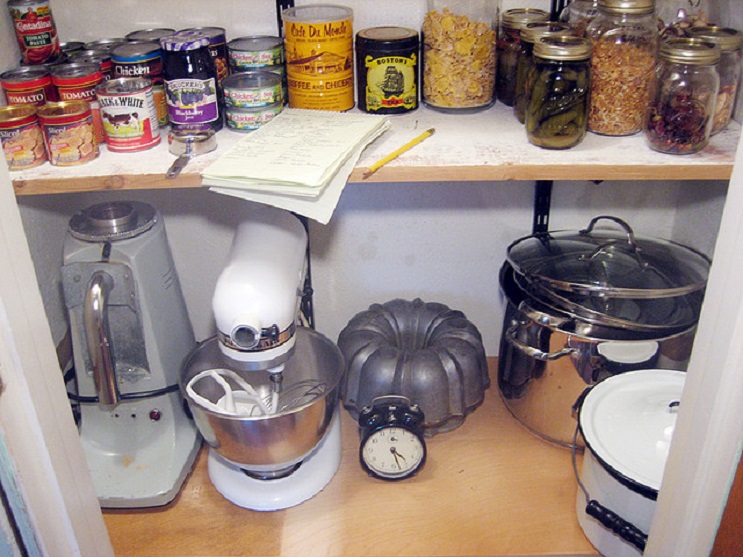
Flickr Image, https://flic.kr/p/7LbvSz
Check stock – People are coming to your restaurant to eat. Your supplies have to be checked on the regular to ensure that you will have a fresh and abundant supply of everything that is on your menu. This is particularly true of pantry staples but also of the dish elevating staples. GQ lists everything from hot sauce to pickled figs as ingredients great chefs cannot live without.
After Cooking Shifts:

Flickr Image, https://flic.kr/p/b5GvuF
Clean fryers – The amount of food particles and cooking oil that may gather can make fryers tricky to clean. Unplug and let it cool completely before you clean. On a ChefTalk message board, a food writer wrote that “it is never a good idea to let oil sit in a home fryer…leaving it can lead to rapid oxidization and rancidness.”
Drain the oil into a food safe container. Clean the frying basket in the sink. Wipe the fryer clean inside and out. Fill with hot water overnight and drain in the morning.

Brush grill – Chef Michael Lomonaco of Porter House New York recommends cleaning the grill while you cook as well as after. He says, “a clean grill will heat better and therefore cook better.”

Clean kitchen equipment – Every knife, every food processor, and every cutting board should look as clean as a whistle by the time you leave. The Kitchn suggests washing chef’s knives with plain old soap and water. Dry knife blades with a clean towel to prevent rusting.
Clean toasters and microwaves on the inside. Take appliances apart to clean each part. This will keep you from having to replace your equipment on the regular.

Empty sanitizing buckets – Don’t bring your grime into the next day. Sanitizer can quickly become inactive and it may be clean, but is it sanitized? The ChefTalk website puts sanitizer as one of the key points in being a clean line cook.

Put cleaning rags in laundry – Bar mop towels are inexpensive and can handle a lot of washing. Add vinegar or bleach to the wash to make sure they are properly sanitized.

Flickr Image, https://flic.kr/p/6aSFSc
Wash Aprons and chef coats separately in laundry – In some cases, dry cleaning is recommended but it depends on your budget. It is best not to use chlorine bleach, which may yellow the aprons and chef coats. Oxygen based bleach is the recommended way to keep the whites white.

Wash and sanitize surfaces – Let the staff come into a sparkling kitchen the next morning. From a safety perspective, it can also keep people from injuring themselves.

Flickr Image, https://flic.kr/p/2A7eqy
Cover and date bins in cooler – Store ready-to-eat food above raw food. The bottom shelf of the fridge is normally the coldest. This is where you should store raw meats, fish and poultry. Gordon Ramsey declares that his fridges are cleaned twice a day but most kitchens don’t go quite that far.

Flickr Image, https://flic.kr/p/812Hbt
Sweep and mop the floors and wipe down mats – Mats will help to reduce the wear and tear on your floors. Iron chef Michael Symon says that his ideal kitchen has floor mats in front of the stove, because “these legs are old and tired!” Commercial mats are made for different areas, from a grease resistant cooking line to an anti-fatigue food prep. Pull them off the floor and mop them thoroughly at the end of the day.

Flickr Image, https://flic.kr/p/cCGkQN
Organize fridge – The Kitchn suggests that all kitchens should have fridges that are organized like commercial kitchens, because “they organize their fridges with food safety in mind.” Organize based on expiration date but also based on the temperature the food need to be cooked to. Only condiments should go on the door of the fridge, since this is the warmest area.
Weekly List:

Flickr Image, https://flic.kr/p/94Moc3
Clean out grease traps – CPM cleaning informs us that grease traps “have to be cleaned periodically by grease trap cleaning companies.” If you decide to do it yourself, the name lets you know that this one won’t be too easy to clean. You will have to take it apart and put it back together. Do so mindfully so you won’t be left with parts at the end.

Change foil linings – You may want to consider doing this daily. The bare minimum is weekly: change the foil on grills, ranges and flattops.It even makes a “cockroach prevention” cleaning list.

Flickr Image, https://flic.kr/p/8jFMqp
Wash can openers – Hopefully this made it into your daily checklist, but this one is often neglected. Let the can opener soak in vinegar for a few hours, scrubbing away any rust with a toothbrush. Rinse the vinegar with dish soap.
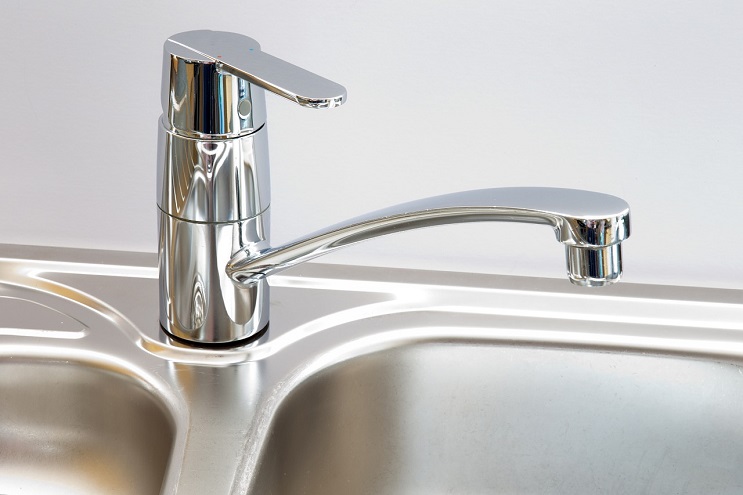
Scrub dirt and grime off faucets and sinks – Faucets often collect more germs than basins. Check the finish on your faucet to determine how best to care for it (in many cases, a scrub brush or toothbrush will be your friend). After cleaning, olive oil can help it to gleam.
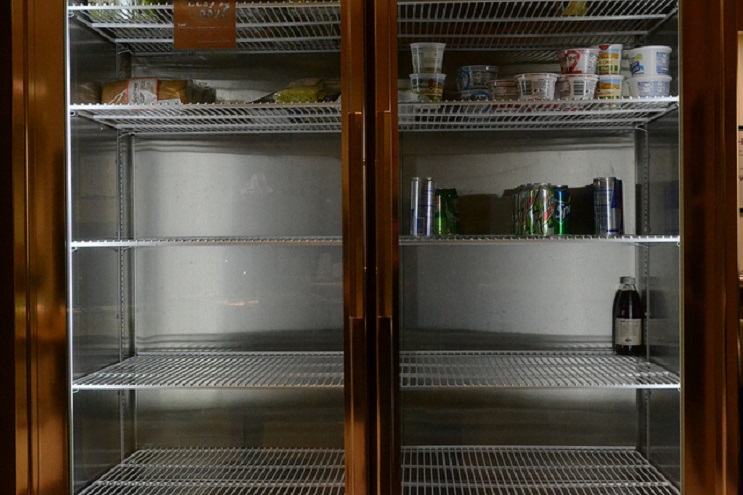
Flickr Image, https://flic.kr/p/ekJ5tp
Empty out, sanitize, and clean fridges – According to Red Beacon, restaurants carefully monitor and inspect fridges for cleanliness, temperature control and food handling. The Centre for Disease Control estimates that 48 million Americans experience food poisoning every year, and deep cleaning the fridge is one way to prevent this from happening in your restaurant.
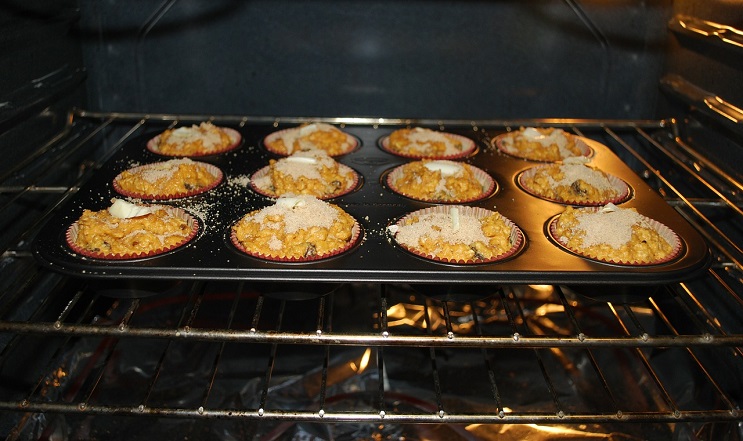
Clean oven – Cleaning regularly will maximize performance and minimize smoke. Food Service Warehouse insists that “if the oven is not properly cleaned and maintained, efficiency will suffer.” Different ovens should be cleaned in different ways. Follow your manufacturer’s instructions.

Clean coffee machines – By not cleaning your coffee machine regularly, even the most upscale brew can taste funky and bitter. A regular cleaning routine will remove hard water deposits. Use a commercial cleaning solution or vinegar water mixture to run through the pot as you would a cup of coffee. Wash normally.
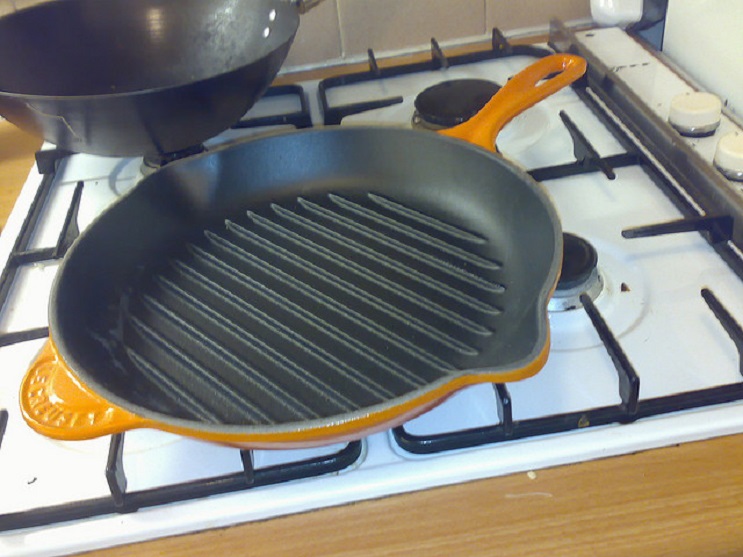
Flickr Image, https://flic.kr/p/CPq7v
Oil cast iron cookware – Ideally, you will rinse your cookware immediately after cooking. You may need to scrub off tough stains and you can use coarse salt for this. Once clean, rub the cast iron pan with oil and cook at 350 for 1 hour. This thin layer of oil will protect the cookware and help to keep it in good condition.

Flickr Image, https://flic.kr/p/Hdzm
Use drain cleaners on floor drains – Upkeep is much easier than dealing with a clogged drain in the middle of a workday. There are many cleaning products designed for this, but baking soda and vinegar can also work wonders to keep things moving smoothly.
Monthly List:
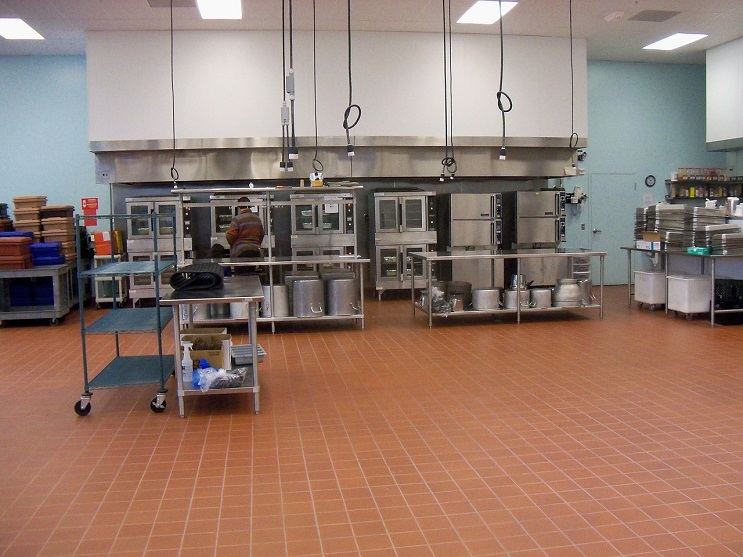
Wash behind the hot line to cut down on grease – The line of stations in a kitchen can get messy. If you can pull out the appliances and look behind them, you will cut down on rodents and keep things manageable and clean. In Kitchen Confidential, Anthony Bourdain writes, “Messy kitchen, messy mind.”
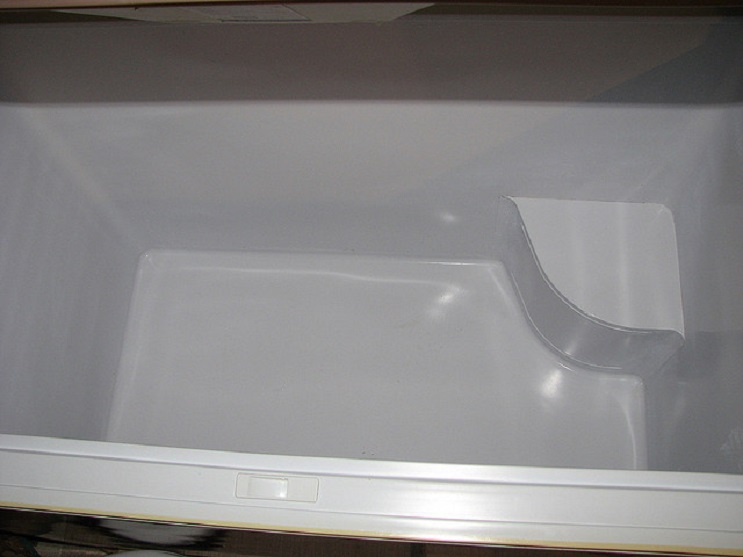
Flickr Image, https://flic.kr/p/DW1oc
Clean freezers – A little more time consuming than cleaning a fridge, you will need to unplug and unload your freezer. Get rid of anything that is covered in ice crystals. Remove the drawers and detachable parts and scrub them well. After it has been defrosted and plugged in again, you will find more space for your frozen items.

Flickr Image, https://flic.kr/p/56pi6N
Calibrate thermometers and ovens – This is actually a fairly simple procedure. Heat boiling water and place a thermometer probe into the water to check if it is between 210 to 214. You may need to readjust. Calibrating ovens varies from model to model, so do check manufacturer’s instructions. Ovens can be notoriously inaccurate at the best of times and Modernist Cuisine believes that “leaving temperature control to intuition is a recipe for disaster.”

Flickr Image, https://flic.kr/p/9RzHGd
Empty and sanitize ice machine – The US Food and Drug administration classifies ice as food. It is important to sanitize according to the guidelines.

Flickr Image, https://flic.kr/p/bCrCsf
Scrub down walls, cupboards and dry storage areas – “Kitchen walls, even though they’re out of the public eye,” says Robert Doland of Jacobs Doland Foodservice Consultants, “still need to perform to a high functional standard. Durability, cleanability, and low-maintenance are the driving decision makers.” Wipe down walls using a circular motion. Allow food stains to soak for a few minutes before scrubbing off.

Restock first aid kit – Accidents happen. Le Bernadin’s Michael Laiskonis lost the tip of his thumb cutting onions. It is easy to get refills for a restaurant grade first aid kit (although not so easy to replace a thumb). Some first aid supplies may not be in the kit: Locanda Verde’s Pastry Chef Karen DeMasco thinks butter works well for burns.

Flickr Image, https://flic.kr/p/6VUesy
Wash ceilings – Chef Robert Irvine says, “Keep your restaurant clean or shut it down!” Remove cobwebs with a vacuum. Place this task before you clean the floors. Make sure to cover furniture to protect yourself from the effects of gravity.
Yearly List:

Check fire extinguishers – This should be a thorough check to make sure that the extinguisher will operate effectively and safely.
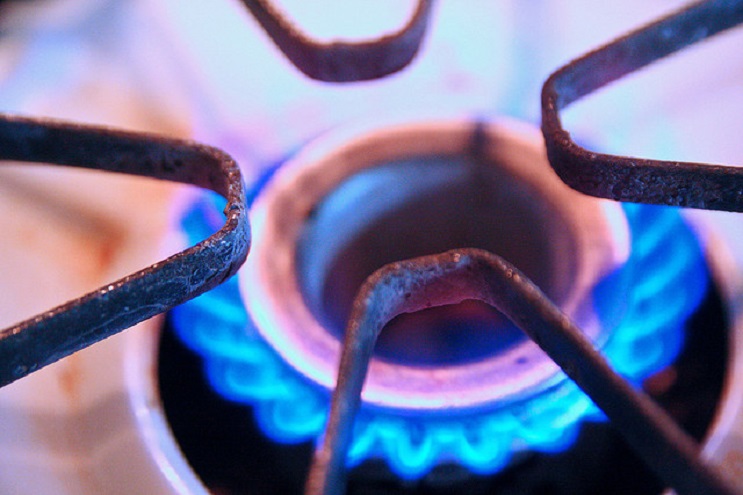
Flickr Image, https://flic.kr/p/7rwdK9
Check hood lights on gas kitchen equipment – Keeping the manual will help you with this, or you can always hire a professional. The good news is that if you lost your manual, it is easily found online.

Flickr Image, https://flic.kr/p/m9mrqV
Check hoods – A range hood is considered to be a essential kitchen appliance for a commercial kitchen. Cooking without a range hood would be extremely uncomfortable because the heat and steam and odors of the kitchen need circulation. Make sure the fan is working well and that no parts have to be replaced.

Flickr Image, https://flic.kr/p/5mi3KW
Deep clean the fridge – As with the freezer, this may involve taking many things apart and putting them back together. Martha Stewart suggests that a good time for a deep clean is when there are fewer items in the fridge to begin with. Less work for you!

Flickr Image, https://flic.kr/p/a7namV
Replace cleaning equipment – Mops and dish rags don’t last forever but they can last all year if maintained properly. Cleaning tools can be breeding grounds for bacteria and need to be washed frequently. One estimation is that a mop head can be washed 250 times or more before replacing. A year is a good time to see if it looks like it is worth keeping around.
Does the cleaning checklist come naturally to you, or do you need to see it in print to keep your kitchen so clean you could eat off the floor (although we recommend a plate)?


